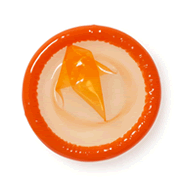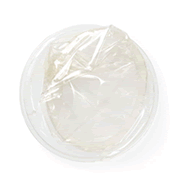When something’s up down there
What to expect at the gynecologist

Maybe it starts with a little itch, a whiff of something unusual, or a new color or consistency to your vaginal discharge. Maybe you notice a bump, or maybe it burns when you pee. And suddenly you get that sinking feeling, you know the one. The one that says “get thee to a doctor.”
Much as we wish it weren’t so, lots of people with vaginas will get one kind of infection or another at some point, whether it’s yeast, bacterial vaginosis, or an STI. Knowledge is power, so read up on different types of infections here, here, and here. And if you think you’ve got something going on, get it checked out by a professional (find one here) ASAP.
When you go to the gynecologist because you’re having an issue (this is sometimes called a “problem visit”), it’s not the same as your regular yearly check-up. So if you’re not sure what to expect from this kind of appointment, we broke it down for you:
Get there. This is really the most important part, the part where you drive/ride/walk/hop/roll/get pushed to the doctor’s or nurse practitioner’s office. Don’t turn around halfway there, even though you may want to! When you get there, make sure you talk to somebody about payment/insurance. The last thing anybody needs is a surprise bill after the fact.
Get a room and get (half) naked. The nurse or assistant who calls you in may ask you to pee in a cup. Once that’s done, they’ll probably tell you to undress from the waist down, hand you a “drape,” and leave you alone in the room. If you’re not sure what you need to take off and what you can leave on, here’s a rule of thumb for you: take off everything that’s blocking access to your vagina. And what about socks, you ask? They’re not blocking access to your vagina, so it’s totally up to you whether you take those off or leave them on. We’ve gone both ways ourselves. (Side note: you may be asked to put on a gown instead of using a drape, in which case, you’ll probably need to be completely naked underneath. Socks still optional!)
Chill. Hop up on the exam table (which, by the way, should be covered in a clean sheet of thin paper, kind of like a big piece of wax paper). Once you’re up on the table, grab that “drape” they left for you, which is basically an awkwardly small sheet made of weird crinkly paper stuff. Put it over your lap, and if it reaches, you can pull it around your back too since your butt may be exposed otherwise (but honestly, whatever). Oh and good news: you can keep your phone with you while you’re up on the table!
Speak your truth. Once the doctor comes in, they’ll probably ask you some questions about your symptoms. Now is not the time to hold back. If your vulva itches, say your vulva itches. If the itch is deep inside your vagina, say it itches deep inside your vagina. If you have a sore on your inner labia, tell them that. If your discharge has been thick and lumpy or it’s smelled sort of fishy, they need to know that, so tell them. Need a little anatomy refresher? We’ve got you covered. Feel really, really awkward saying words like “vulva” and “inner labia”? That’s okay, a lot of people feel that way the first few times they have to talk about this stuff because our society has taught us to be ashamed of our bodies. Gotta do it anyway!
Don’t be shy! When the doctor is ready to examine you, they’ll tell you to lay back and scoot all the way down towards them. They aren’t kidding. Scoot allllllll the way to the edge of the table, until your butt is almost over the edge. Don’t worry about the fact that you’re sticking your vagina and butt right in someone’s face. That’s what they get paid to do. They’ve seen billions of vaginas and butts. Okay, maybe not billions, but a lot. Enough that they’ve seen literally every type of vagina and butt-related thing.
The exam itself has two main parts. If you’ve experienced trauma, you can talk to your doctor before the exam starts to let them know that you want as little intervention as possible. It’s their job to make you comfortable, so let them know if there’s anything specific you’d prefer, like no internal exam, and they can tell you if that’s something they really need to do or not. It’s ultimately up to you, and you can say no. That said, here are the main parts of the exam:
The external exam. The doctor may touch your vulva and peer around at your outer bits. They should tell you what they’re doing, but if they don’t, you can ask. They should be wearing gloves. If you feel that something unusual or not okay is happening, you can always, always ask to stop the exam. YOU’RE THE BOSS.
The internal exam. The doctor may just want to stick some swabs (like super long q-tips) into your vagina to collect samples to test for different things. If they want to take a look inside your vagina, they’ll use a speculum for that. A speculum is an instrument made of plastic or metal that goes inside your vagina to open it up a little and let the doctor look in. Some people aren’t bothered by the speculum and some describe it as a feeling of “pressure” or as being “uncomfortable.” If it hurts, speak up. After taking the speculum out, they may then do what’s called a bimanual exam if you’re having pain or tenderness. A bimanual exam is when they put two (gloved) fingers inside your vagina, and use their other hand to press down on the outside of your belly. If anything hurts while they’re doing this, let them know.
While you’re in the office, take the opportunity to ask your doctor any questions you have about your birth control. If you’re not loving your method, start a conversation with them about why.
And that’s it! You’re done! Now all you have to do is wait for your results. Reward yourself with a pat on the back or maybe some affirmations written in lipstick on your mirror.
How do you feel about this article?

Heat up your weekends with our best sex tips and so much more.

